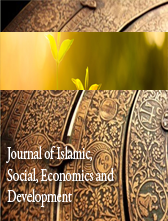THE RELATIONSHIP BETWEEN BLENDED LEARNING AND STUDENTS’ PERFORMANCE AND ENGAGEMENT IN NANCHANG, CHINA
Abstract
As the global educational landscape continues to evolve, the role of blended learning in Nanchang, China, and its impact on student performance and engagement have gained significance. Blended learning, an approach that seamlessly integrates traditional classroom teaching with digital resources, holds promise for improving educational outcomes. However, its effects on students within the unique cultural and technological context of Nanchang remain largely unexplored. This study aims to address this gap by employing a quantitative research approach to examine the relationship between blended learning and student performance and engagement in Nanchang's educational institutions. To achieve our research objectives, we will employ a cross-sectional research design, collecting data from a representative sample of students enrolled in five universities in Nanchang. Data will be gathered through a questionnaire-based survey that covers demographics, student perceptions of blended learning, and academic performance. Data analysis will involve descriptive statistics to summarize survey responses and regression analysis to explore the relationships between variables and their impact on academic performance. The findings of this study will shed light on how blended learning is perceived and experienced by students in Nanchang, as well as its influence on their academic performance and engagement. By examining these factors in the local context, we aim to provide valuable insights into the effective integration of blended learning into Nanchang's educational system. This study contributes to our understanding of the relationship between blended learning and student performance and engagement in Nanchang, China. The implications of this research extend beyond Nanchang, offering insights that can be valuable for educational institutions worldwide as they navigate the evolving landscape of blended learning.













